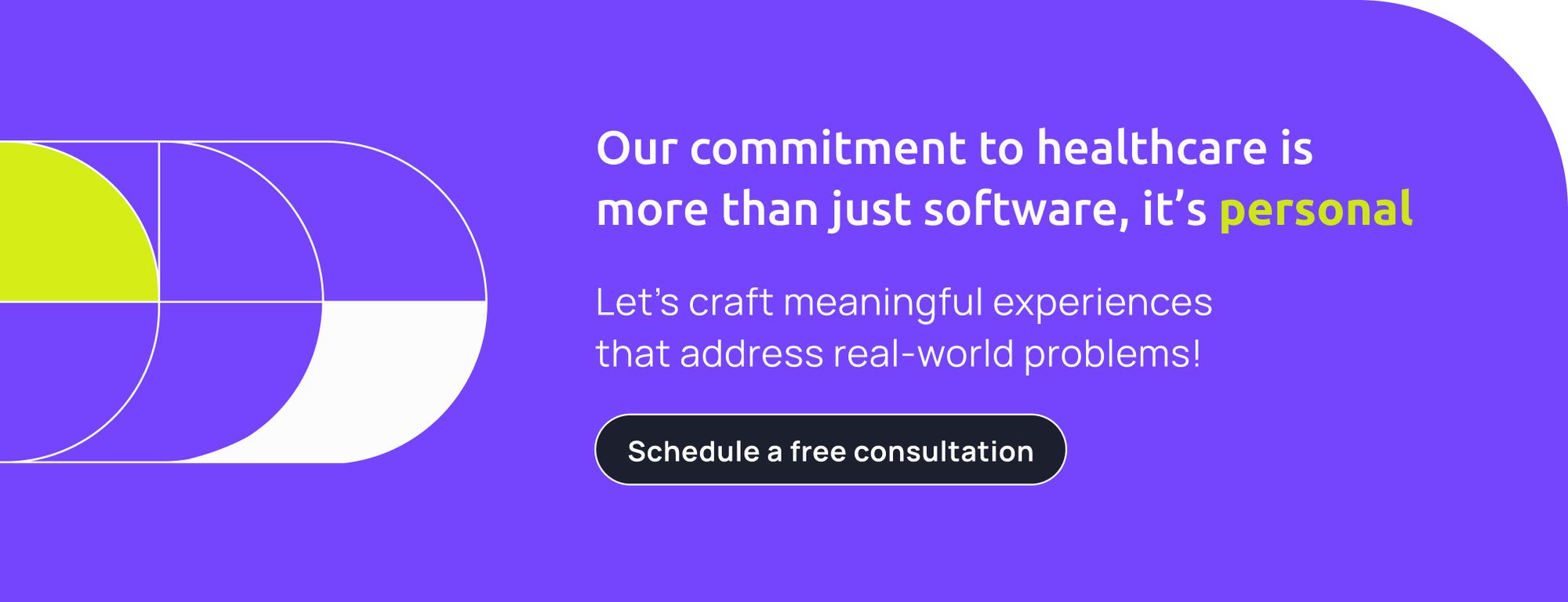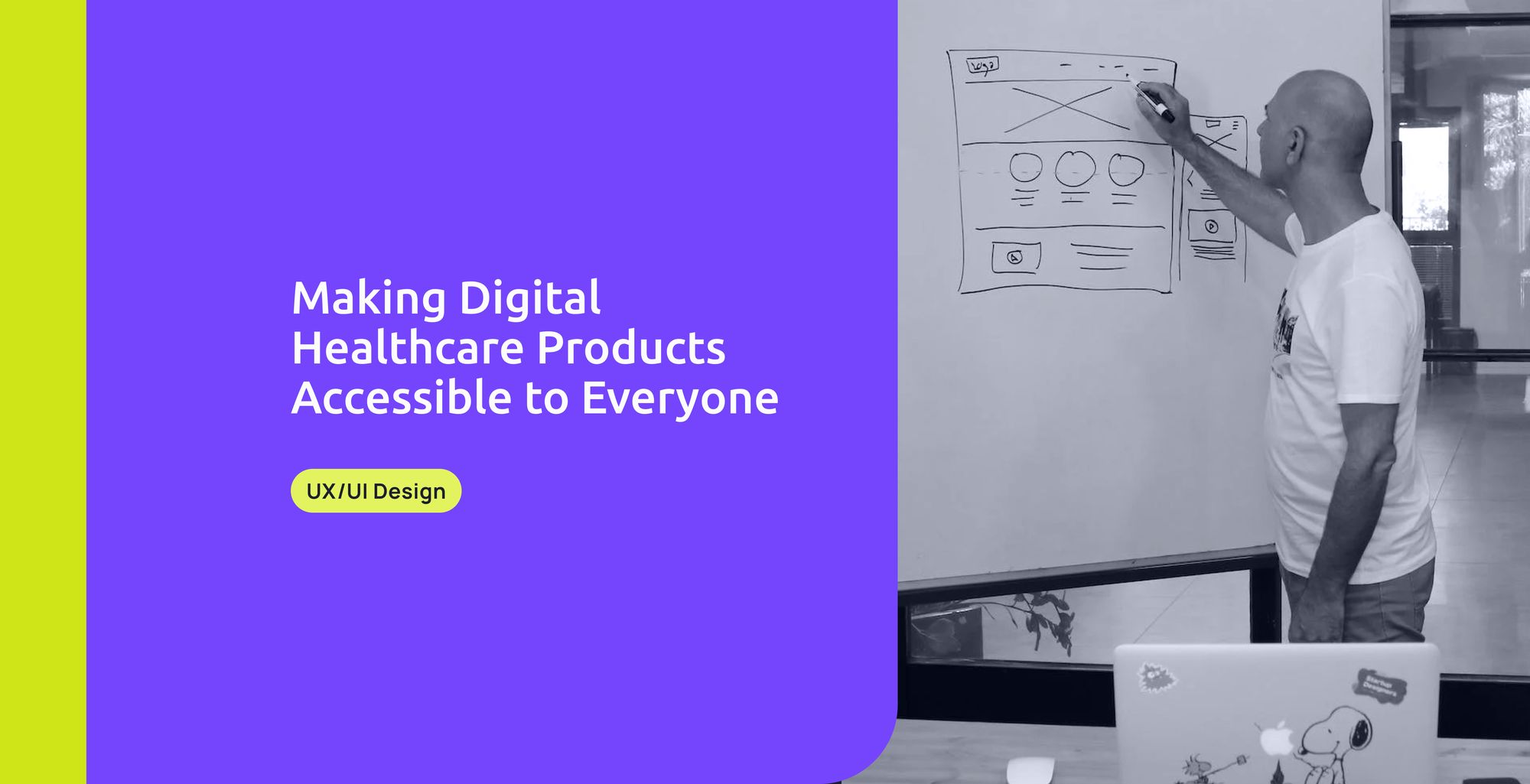In today's digital age, healthcare services and resources are increasingly moving online, offering convenience and efficiency.
However, this shift poses a significant challenge for individuals with disabilities. Many digital healthcare platforms may not be designed with accessibility in mind, inadvertently excluding those who face barriers due to visual, auditory, mobility, or cognitive impairments.
This article is driven by the belief that inclusivity should be at the heart of the healthcare industry.
We seek to raise awareness of the challenges faced by individuals with disabilities when accessing digital healthcare resources and emphasize the importance of making these resources inclusive and accessible to all.
The lack of accessible healthcare can lead to unequal opportunities and hinder patient-centered care. Individuals with disabilities may encounter obstacles when seeking critical healthcare information, booking appointments, or accessing medical records.
As a result, they might not receive the quality of care they deserve.
We believe that everyone deserves access to equitable healthcare, and digital resources play a pivotal role in achieving this goal. Through practical and impactful solutions, we advocate for adopting accessible healthcare practices.
We also emphasize the significance of user testing, training, and awareness to foster a genuinely inclusive healthcare experience.

What is Accessibility in Healthcare?
Accessibility in healthcare means ensuring that healthcare services, facilities, and digital resources are accessible to everyone, including individuals with disabilities. It promotes equal opportunities and inclusivity in healthcare experiences.
Types of Disabilities
Permanent Disabilities
Permanent disabilities are long-term or lifelong conditions that significantly impact a person's daily life. These disabilities are not expected to improve over time and may require ongoing support or accommodations. Some examples of permanent disabilities include:
- Visual Impairments: People with permanent visual impairments may have low vision or be blind, requiring alternative methods to access information and navigate digital resources.
- Hearing Impairments: Individuals with permanent hearing impairments may be deaf or hard of hearing, needing the provision of captioning and transcripts for audio content.
- Mobility Impairments: Those with permanent mobility impairments may have difficulty using traditional input devices and may require specialized tools, such as adaptive keyboards or voice recognition software.
- Cognitive Disabilities: Permanent cognitive disabilities, such as intellectual disabilities or learning disorders, may impact comprehension and require straightforward and clear communication in digital resources.
Circumstantial Disabilities
Circumstantial disabilities encompass conditions that engender temporary impairments or limitations, specifically arising in certain situations. Unlike permanent disabilities, these conditions are transient in nature, brought about by specific circumstances. Here are some illustrative examples:
- Injury-Related Disabilities: Temporary injuries, such as a broken arm or leg, may limit a person's ability to use traditional input devices or require adjustments in accessing healthcare information.
- Temporary Medical Conditions: Certain medical conditions, like post-surgery recovery or the side effects of medication, can result in temporary impairments that impact a person's ability to use digital healthcare resources.
Temporary Disabilities
On the other hand, temporary disabilities refer to conditions that bestow short-term limitations upon an individual's abilities. These limitations typically manifest suddenly and generally resolve within a relatively brief period. To provide clarity, here are some instances:
- Short-Term Injuries: Sprains, strains, or minor fractures can temporarily limit a person's mobility and may require alternative methods of accessing healthcare resources during recovery.
- Temporary Sensory Impairments: Conditions like temporary loss of vision or hearing may occur due to infections or other factors, requiring accommodations to access healthcare services.
Why is Accessibility Important?
- Equal Access: Accessible healthcare ensures that individuals with disabilities can access services, facilities, and information without facing barriers. It promotes equal access to healthcare for all.
- Inclusivity and Patient-Centered Care: By considering the needs of individuals with disabilities, healthcare providers can offer inclusive and patient-centered care, leading to better health outcomes and patient satisfaction.
- Legal Compliance: Many countries have laws and regulations, such as the Americans with Disabilities Act (ADA), that require healthcare providers to provide accessible services and avoid discrimination.
Real-world examples
"It could take me the entire day to understand how I could get vaccinated. It’s not right.”
"My partner is blind, and people don’t always understand that he also needs to access things online. They say, ‘If he’s blind, why would he be online?’ But the truth is, we all consume content differently."

“I was fortunate because I’m married to a sighted person. But I did know of blind individuals in Salt Lake City and some of the rural areas that were in a desperate situation.”

"I tried unsuccessfully for a month to make the website work with my screen reader. I finally got the appointment after my mom and roommate helped me out."

"It shouldn't, in theory, be terribly difficult to make health websites and billing platforms accessible to customers with visual impairments. But it's the world we live in."
Relevant Standards and Regulations
- Americans with Disabilities Act (ADA): This U.S. law prohibits discrimination against individuals with disabilities and requires healthcare providers to offer accessible facilities and effective communication.
- Section 508 of the Rehabilitation Act:, This applies to U.S. federal agencies and mandates accessibility of electronic and information technology, including services in the healthcare industry.
- Web Content Accessibility Guidelines (WCAG)These international guidelines by the World Wide Web Consortium (W3C) ensure web accessibility. WCAG 2.1 provides standards for making websites and digital resources perceivable, operable, understandable, and robust.
The Potential Penalties
Lawsuits over digital accessibility have risen in recent years:
According to a 2021 Wall Street Journal article, approximately 3,500 lawsuits over web accessibility were filed in 2020 – up from 2,900 in 2019 and 2,300 in 2018.
According to the same report from UsableNet, cited by the Wall Street Journal, this equates to more than one digital accessibility lawsuit being filed per hour.
The Ninth Circuit previously interpreted the ADA to apply to Domino’s website as a place of public accommodation.
While the question of law may still be subject to debate, the fact remains that any litigation over web accessibility opens your firm up to the costs associated with such a case, including attorney time (or fees for outside counsel), filing fees, and discovery costs.
Additionally, ADA violations could subject your firm to penalties of up to $75,000 for the first violation.
It is also important to remember that the ADA is not the only law that could potentially spark litigation over web accessibility. Some states have laws about digital accessibility; others may argue additional applicable federal laws and other countries also have legislation on the issue. As such, you should try to comply with accessibility best practices whenever possible.
Good Practices for Designing Accessible Digital Resources
In the realm of designing accessible digital resources, recognizing the importance of context becomes paramount. Context refers to the unique circumstances, goals, and constraints surrounding a particular project. These contextual elements can significantly influence the decisions we make when it comes to ensuring accessibility. By understanding how context shapes our approach, we can adopt more comprehensive and inclusive practices that cater to the diverse needs of all users:
- Alternative Text: Use descriptive text descriptions for images, charts, and graphs to assist individuals using screen readers or unable to see visual content.
- Clear Navigation: Design intuitive and easy-to-use navigation with clear headings and labels. A logical structure helps individuals with disabilities find and understand content.
- Text Accessibility: Ensure sufficient color contrast resizable fonts, and avoid text embedded in images to aid those with visual impairments or dyslexia.
- Keyboard Accessibility: Ensure all functions and interactive elements can be accessed and navigated using only a keyboard. This helps individuals with motor disabilities or alternative input devices.
- Video and Audio Accessibility: Provide captions, transcripts, and audio descriptions for videos and audio content, making them accessible to individuals with hearing impairments.
- Form and Input Design: Use clear labels, instructions, and real-time error notifications for forms to assist individuals with cognitive disabilities or using assistive technologies.
- User Testing and Feedback: Regularly test digital resources with individuals with disabilities, incorporating their feedback to improve usability and accessibility.
- Training and Awareness: Educate healthcare providers and staff on accessibility standards, best practices, and the importance of inclusive healthcare.
Accessibility Testing Tools
To ensure digital accessibility in healthcare resources, healthcare providers and web developers can utilize a variety of accessibility testing tools:
- WAVE Web Accessibility Evaluation Tool:WAVE is a web accessibility evaluation tool developed by WebAIM. It allows users to enter a URL and generates a detailed report highlighting accessibility issues, such as missing alternative text, color contrast problems, and structural elements.
- Axe by Deque Systems: Axe is an open-source accessibility testing engine that integrates with popular web browsers like Google Chrome and Mozilla Firefox. It provides real-time feedback and suggests improvements to enhance accessibility.
- NVDA (NonVisual Desktop Access): NVDA is a free, open-source screen reader for Windows that enables users with visual impairments to access and navigate digital content. Web developers can use NVDA to test how screen reader users experience their websites.
- VoiceOver VoiceOver is an integrated screen reader on Apple devices, such as iPhones, iPads, and Mac computers. Testing with VoiceOver allows developers to ensure their digital resources are compatible with Apple's accessibility features.
- Color Contrast Analyzers: Color contrast is crucial for individuals with visual impairments. Tools like the Color Contrast Analyzer by The Paciello Group or Contrast Checker by WebAIM help assess the color contrast of text and background elements.
- Tenon.io: Tenon is an automated accessibility testing tool with many features, including API integration, batch testing, and prioritized issue reports.
- Accessibility Insights: Accessibility Insights is a suite of tools Microsoft offers, including a browser extension and a stand-alone Windows application. It aids developers in finding and fixing accessibility issues during the development and testing phases.
Last Reflections
Ensuring health technologies are accessible is not just a matter of convenience; it is a fundamental aspect of providing equitable healthcare for all individuals. The shift towards digital platforms brings unprecedented opportunities for efficiency and convenience, but a commitment to inclusivity and accessibility must accompany it.
By considering the needs of individuals with permanent, circumstantial, and temporary disabilities, healthcare providers can create a genuinely inclusive and patient-centered healthcare experience. Implementing accessibility good practices, adhering to relevant standards and regulations, and utilizing accessibility testing tools are essential steps toward achieving this goal.
Healthcare providers and web developers must understand that accessibility is not just about ticking off compliance boxes to avoid legal penalties. It is about recognizing the value of every individual and acknowledging their right to equal access to healthcare services and information.
Reaching true accessibility may require a shift in mindset and a willingness to challenge existing assumptions about disability and technology.
We must continuously learn from real-world examples, listening to the experiences and struggles of individuals with disabilities, to build a more empathetic and inclusive healthcare industry.

